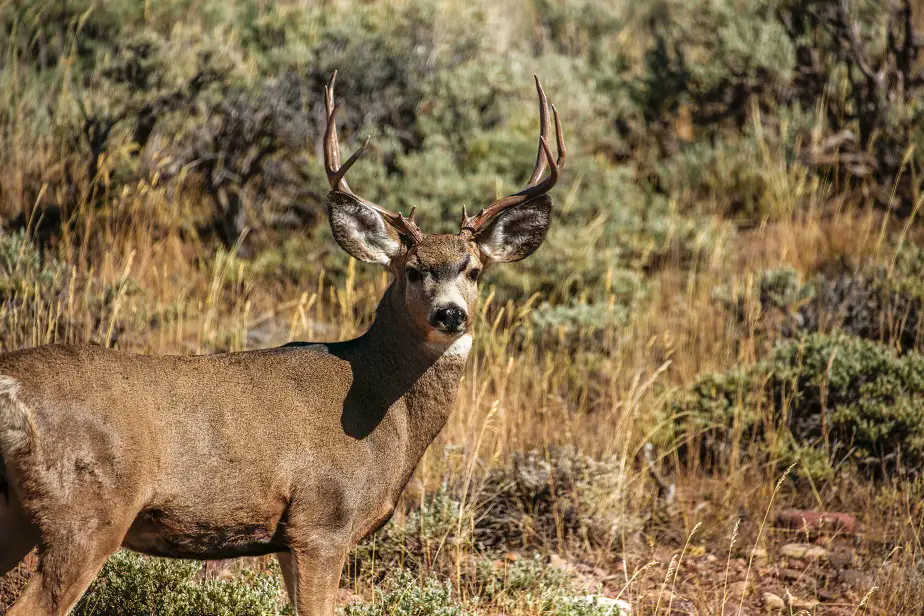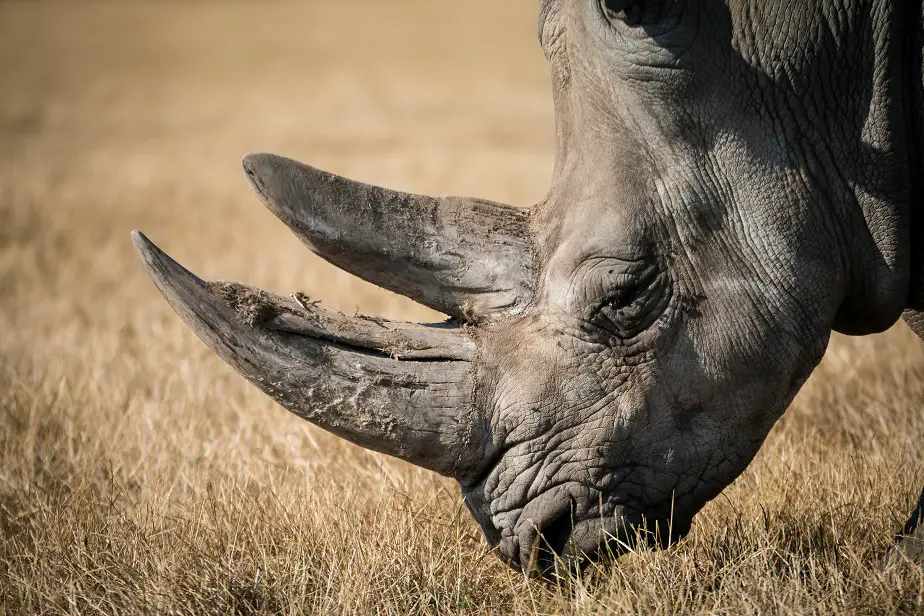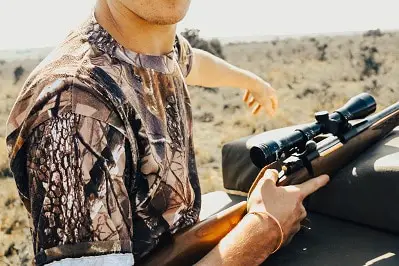The 30-06 has been a staple in American Gun Culture since probably before World War One. It is a versatile military cartridge designed for smokeless powder in 1906. It has been used for hunting ever since, but how good is it really?
The 30-06 has been a favorite deer hunting cartridges for almost 120 years. It has been used to take more deer in the US. than any other caliber. There are heavy for caliber bullets for long-range use, and low recoil bullets for younger or smaller shooters.
The 30-06 has the potential as a flat shooting varmint gun, a heavy-hitting light magnum, and a long-distance target rifle. Want to know more? Read on.

What Makes the 30-06 Good for Deer Hunting?
There were several factors that really spurred on the success and popularity of the 30-06 as a hunting rifle. to really get down to it, we need to understand the amazing history of this cartridge, spanning over a century
The first point which gave popular traction to the 30-06 was World War One. During world war one, the U.S. got a chance to use the fairly new Springfield bolt action rifle chambered in the new government ball cartridge, the 30-06.
The 30-06 was largely paired up against the slightly older German 8mm Mauser. The Springfield had significantly better long-range ballistics, less drop, than the Mauser. Add to that the fact that the U.S. was on the winning side, our rifles were hailed as the best in the world by many.
As the soldiers came home, they were so impressed of what the Springfield could do, they wanted one of their own. By the second World War, the 30-06 was the large game hunting rifle to be had. At the end of that war, even more soldiers attributed success to their superior cartridge.
The 30-06 saw use in Korea and in Vietnam as sharpshooters and snipers were issued the old Springfields for long range work. Its use in wartime left an impression on thousands as to the effectiveness of the old round.
The 30-06 was originally designed in 1906 as the next smokeless power cartridge for the us military. It was replacing the only slightly older 30-03, which is a funny story in and of itself. The original ballistics was a 150-grain spire point (pointy) bullet going 2,700 fps. For guns of its day, it was cruising.
Compared the other guns of it’s day, it was a very fast bullet with very good trajectory, and it still is today. The 30-06 has more than enough power to take moose sized game at 500 yards. before they got their hands on the 30-06, the most popular round was the 30/30.
With the 30/30, hunters had to get within bad breath distance to take a large animal, and they often did. But after they got their hands on the 30-06, they felt there was nothing that could stand against them. The 30-06 became used for everything from antelope to Alaskan coastal Grizzly Bear.
Neat Fact:
Early on, hunters packed this cartridge across the world to hunt in an African Safari for dangerous game. believe it or not, the 30-06 has successfully taken cape buffalo, hippopotamus, lions, and even elephants. Shucks even the 300 Savage, a slightly less powerful rimmed version for a lever gun, was thought to be overkill for hunting problem Bengal Tigers in the 1920’s by an American missionary.

How is the 30-06 for deer with modern ammo?
The one thing that the 30-06 has better than any other rifle is versatility. There are loads from a flat shooting 55-grain bullet at 4000 fps for varmints, all the way up to thumper 220 grain loads at 2500 fps.
The most common loadings today have either 180 grain or 165-grain bullets. A number of rounds, like the Winchester Deer Season XP are designed specifically for the light-skinned whitetail and mule deer. They are topped off with a bullet that expands quickly for the smaller than elk-sized animals.
The 180-grain bullet has been the standard for every large game in North America, barring coastal Grizzlies and Polar Bears. And they’ve still been used for those animals too. the modern loads easily produce 200 fps more than the original design, even with the same bullet.
It’s an amazing piece of history, and so alluring to think, that the rifle you carry into the woods or over the hills won wars and killed elephants on an African safari.
Is the 30-06 Accurate Enough for Deer Hunting?
I recall one fellow who called into Tom Gresham’s Gun Talk Radio. He had just completed a thousand-yard, long-range shooting course. He used his old Remington 700 in 30-06. He had never been that great a shot, but at the end of the course, he was putting ten bullets into a 10-inch target at 1,000 yards.
Talk about incredible! Now, at that distance, it doesn’t have large game hunting potential, but it is certainly accurate enough at 1,00 yards, so it’s definitely accurate enough at 500. Now, of course, it depends on your rifle and ammo combination, but that’s the only minute of angle. That’s not so hard to do.
I seriously doubt you will find a rifle made in the U.S. today that won’t shoot right about one minute of angle (one inch per hundred yards) with factory-loaded ammo. The modern levels of accuracy are due to the manufacturing process in ammo and in making the rifle barrels. Precision equipment has come a long way in 100 years.
Most folks can’t do much better than hitting a large tin can at 100 yards with their rifle, 30-06 or not. Whether you can or not, the bullet has some serious accuracy potential.

Did you know: Teddy Roosevelt was said to be a poor shot with his 30-06 on his 1909 safari. Even so, his poor shots still took his game. It impressed his friend, Ernest Hemming way so much, he brought one on his famous safari in 1933 where ha stopped a charging rhino at 300 yards with one shot.
How Far Will a 30-06 Kill a Deer?
The 30-06 is not a long-range hunting cartridge. Still, it might do better at a distance than you’re probably expecting for a cartridge designed in 1906. A basic rule is that a deer hunting cartridge should have a minimum of one thousand-foot pound of energy to handle even less than perfect shots.
A quick look at a Hornady ballistics chart shows the 30-06 with between 1300- and 1500-foot pounds of energy at 50 yards. 1,500-foot-pounds is considered the minimum for moose. So yes, it will reliably kill a deer quite a bit further.
Most of the long-range hunters agree that the 30-06 has a maximum range of 700-800 yards for a deer. That is if you can make a good shot. There’s a whole lot of wind play and drop in the bullet at that point. It’s no easy task.
The U.S. Army says that the 7.62 NATO (308) has a maximum effective range of 700 yards. the marines are a bit more optimistic and tout the fact that they are effective for another hundred yards, to 800. That is a bit of a stretch for the 308. But remember that the 308 has 10 grains less powder than the 30-06, and a lower overall power level.
The maximum distance really depends on your bullet and your skill level. just remember that at 500 yards, you have bull elk and moose power levels. That should be enough for any deer on the earth too. if you see a deer bigger than a moose, let me know. I want it.
The precursor to the Infamous 30-06 Deer Rifle
The 30/03 was the original cartridge loaded into the Springfield 03 bolt action rifles. No, not the 30/30, it’s the 30-03. This is where Teddy comes in.
During the whole incident with Teddy Roosevelt and his Rough Riders, wielding the 30-40 Krag-Jorgensen rifle, they found themselves thoroughly whipped and outgunned by the 7mm Spanish Mauser. After the whipping, the U.S. government went on an overhaul to produce the most powerful repeating rifle in military service.
The result was the Springfield 03 rifle chambered in 30-03. The rifle copied many features of the German Mauser design but had a more fragile firing pin and a looser bolt. The U.S. armory actually contacted Mauser to inspect the rifle for potential patent infringement.
Mauser was paid for the design, 50 cents per thousand stripper clips, and 75 cents per rifle. they were paid about $20,000 by 1909 when the deal was ended.
In the midst of all this, Germany replaced their 230 grain 8mm bullets with a 150-grain bullet, which gave a flatter trajectory and greatly increased the effective range. The U.S. followed suit by designing the 30-06 in 196 and rechambering the 30-03 rifles in the new cartridge.
The new round was faster than the previous but slower than the Mauser. But it did have better accuracy and held its energy better downrange. It was pronounced a success. Almost 120 years later, it is still a great success.

